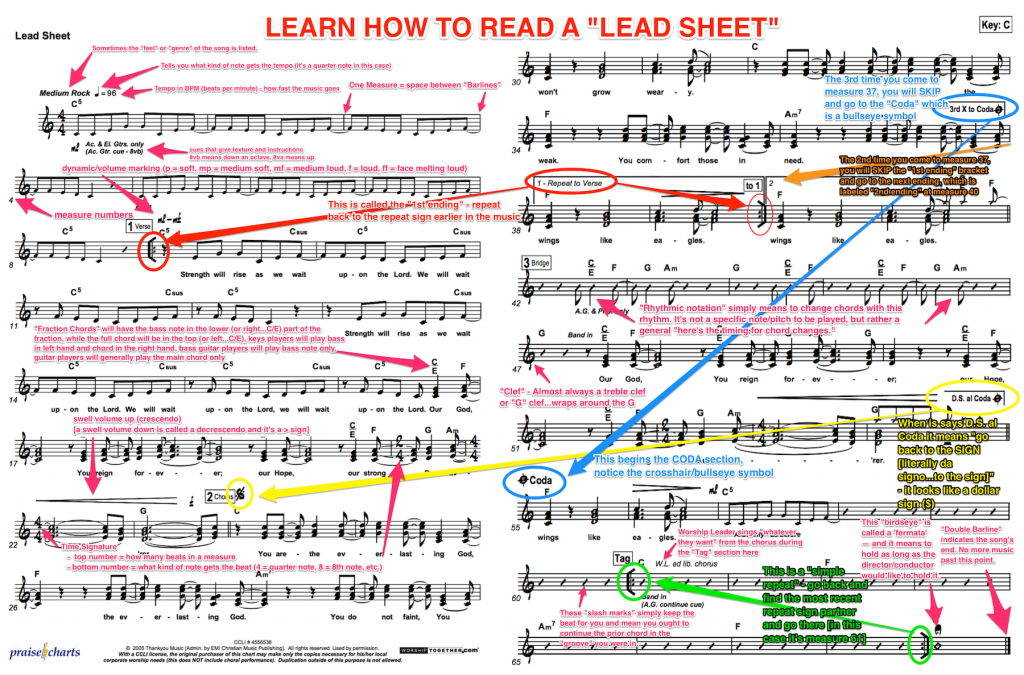“Lead Sheets” – what kind of music charts are they? Why use them?
Most of the time a “chord charts” is suffice for a worship leader. A “chord chart” is made up of lyrics and chords above the lyrics. One must listen to the recording in order to know how the melody goes rhythmically/pitch, tempo of song, texture of song, and how the song is structured. But “lead sheet” seem complicated (and they can be) and cumbersome to use. So why use them at all?

However, a chord chart falls short of bringing BOTH the “by ear” and “music reader” musician together. There are certain situations when a chord chart is simply not enough. In some cases, a leader using a chord chart only (when there are music readers present) can inadvertantly make a leader appear musically ignorant (when really they aren’t). Both sides of readers/non-readers ought to understand they BOTH bring valuable elements to the table. It’s better together. So let’s create a situation where we are communicating the language BOTH speak. In these cases , the Music Director (or Worship Leader) ought to always to rehearse from a “Lead Sheet” instead of solely from a chord chart.
Lead Sheets give the leader more information to guide EVERY musician on stage during rehearsal. It has all the necessary information to communicate with BOTH ’traditional notation’ music readers and “by ear” musicians. For example: If you’d like to start at the Chorus the second time in the song during the rehearsal…the orchestra won’t know where to start, unless the music leader says, “Let’s start at measure 24 the second time…this is the second time through the Chorus in the song.”
There are many other reasons a Lead Sheet is extremely helpful. Song structure. Texture/builds. Dynamics (volume). Chord changes on certain rhythms. Melody pitch. Harmony parts on most choruses (3-part on most modern music), instrumental riffs on intro/turns/outros, and more.